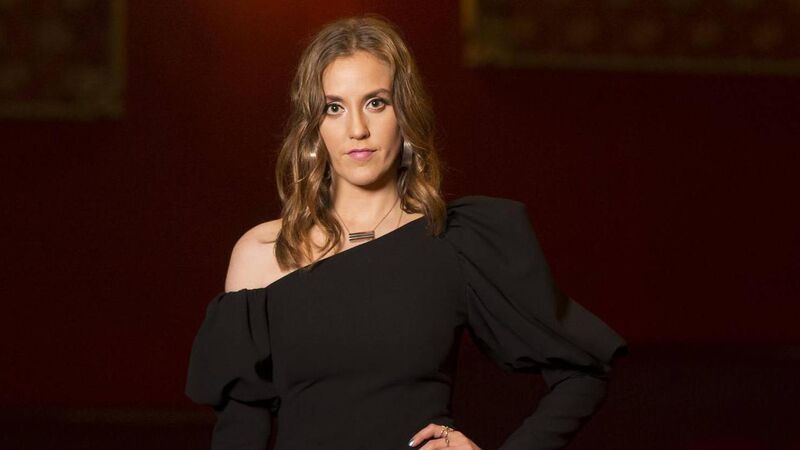Louise O'Neill: Cannibalism, survival, and the idea of civilisation

Photo: Cathal Noonan
In the opening scene of the TV series Yellowjackets, a girl in a thin white nightdress is running through a snow-covered forest, tracking bloody footsteps behind her. There is an eerie sound of cawing and shrieking, coming closer and closer, until she falls into a deep pit. Impaled by the spikes hidden there, she dies.
We’re not sure if she is fleeing or if she has been hunted, but by the end of the episode, we do know that her body is hanging upside down and drained of blood. It is roasted over a fire before eaten by other teen girls in pink Converse, animal skin robes, and antler crowns.
Twenty-five years later, the survivors of the plane crash deny that they partook in such acts – and it’s not hard to see why. Cannibalism is still the ultimate taboo. I did a poll on my Instagram asking people if they would eat human flesh when faced with certain death by starvation and it was a tight result.
46% said yes, they would, and the 54% said no. (One friend commented that he would rather “die with dignity”, to which I responded, “okay, we’ll eat you first.”)
But how many of the respondents have ever been truly starving? Bill Schutt, the author of Cannibalism: A Perfectly Natural History, told NPR in 2017 that “Scientists have looked at starvation. At a certain point, one of the predictable behaviours that you'll see is cannibalism.”
In RTÉ’s documentary, The Hunger: The Story of the Irish Famine, Prof Cormac Ó Gráda discussed incidents of cannibalism recorded during that time in Cork, Kerry, Galway and Mayo, saying:
But surely human flesh is incredibly bad for us? Not according to Medical News Today.
They say it’s no more dangerous for you than eating the cooked flesh of any other animal, as long as you refrain from eating the brain. (A tribe in Papa New Guinea used to practice ‘transumption’, which was a religious ritual in which they ate their deceased relatives, and many developed Kuru, a fatal disease caused by eating the human brain.)
An article in the Smithsonian reported that human flesh looked like beef, but the taste was more elusive; maybe like pork, they concluded, or veal. The Guardian also found that veal was the best comparison, citing the early 20th century writings of a journalist called William Buehler Seabrook, who became fascinated with cannibalism during his travels in West Africa and persuaded a medical intern at the Sorbonne to give him a piece of human flesh from the body of a man who’d died in an accident.
After cooking and eating it, Seabrook described it as such, "It was like good, fully developed veal, not young, but not yet beef. It was very definitely like that, and it was not like any other meat I had ever tasted. It was so nearly like good, fully developed veal that I think no person with a palate of ordinary, normal sensitiveness could distinguish it from veal.” All this to say – if you like veal, you’re probably going to make it out of the wilderness alive.
Jokes aside, the popularity of shows like Yellowjackets or books such as the Lord of the Flies – or indeed, the enduring fascination with Alive, the story of the Uruguayan rugby team whose plane crashed in the Andes and who had to eat the bodies of the dead in order to sustain themselves – is that secretly, we cannot help but wonder how we would fare under such circumstances. Would we remain our ‘civilised’ selves? What lengths would we go to in order to survive?
We can all guess at what we would do but until it actually happens, no one can know for sure. Given the fact I cried this week when my mother told me that I should have bought bio rather than non-bio washing detergent, I don’t rate my chances too highly.
When I remember the time I got lost in a very small woods and screamed at the sky in frustration, like Grampa Simpson, I imagine my fellow plane-crash survivors would probably devise a plan to sneak off in the middle of the night and leave me to fend for myself.
Let’s face it – what would I bring to the proverbial table? I’m a writer, I have no discernible skills. I don’t know first-aid. I can barely light a fire with a fire-log and a pack of matches. I would 100% mix up poisonous and edible mushrooms and accidentally kill everyone. When I told my partner what my desert island essentials are – SPF, a toothbrush and toothpaste, a bar of hand soap, and a Kindle with an everlasting battery – he laughed in my face.
“What about a knife?” he asked. “A flare-gun? A torch?” So now I’ve decided that my desert island essential is to have noted survivalist Bear Grylls sitting next to me on the doomed flight (sorry Bear), and to just do whatever he tells me to in the aftermath. Even if that includes a rather special feast of… veal.
Again, Rachel by Marian Keyes. This sequel to the much-loved Rachel’s Holiday is superb – laugh out loud funny and unbearably moving in equal parts. A must-read.








